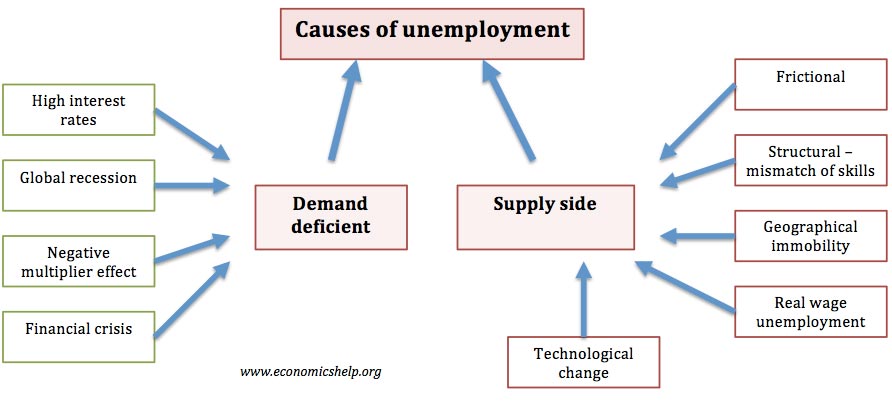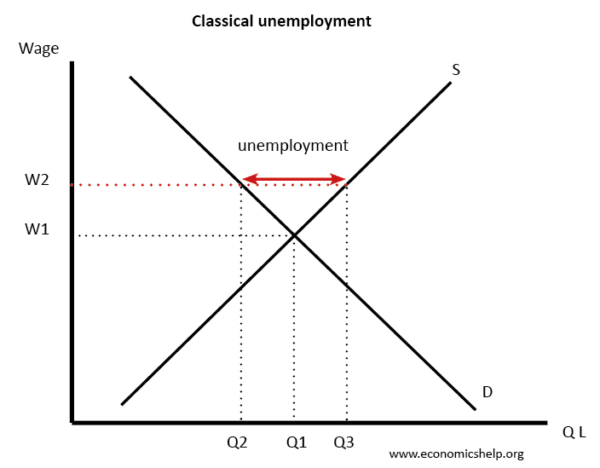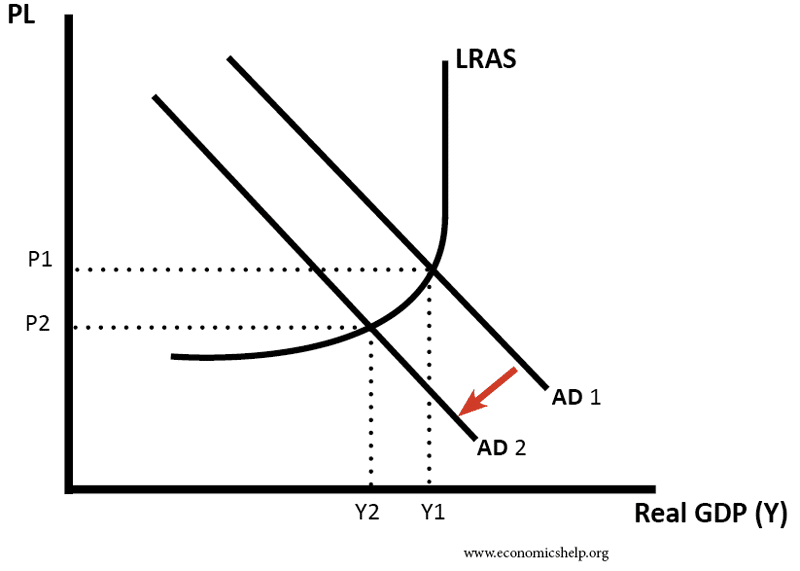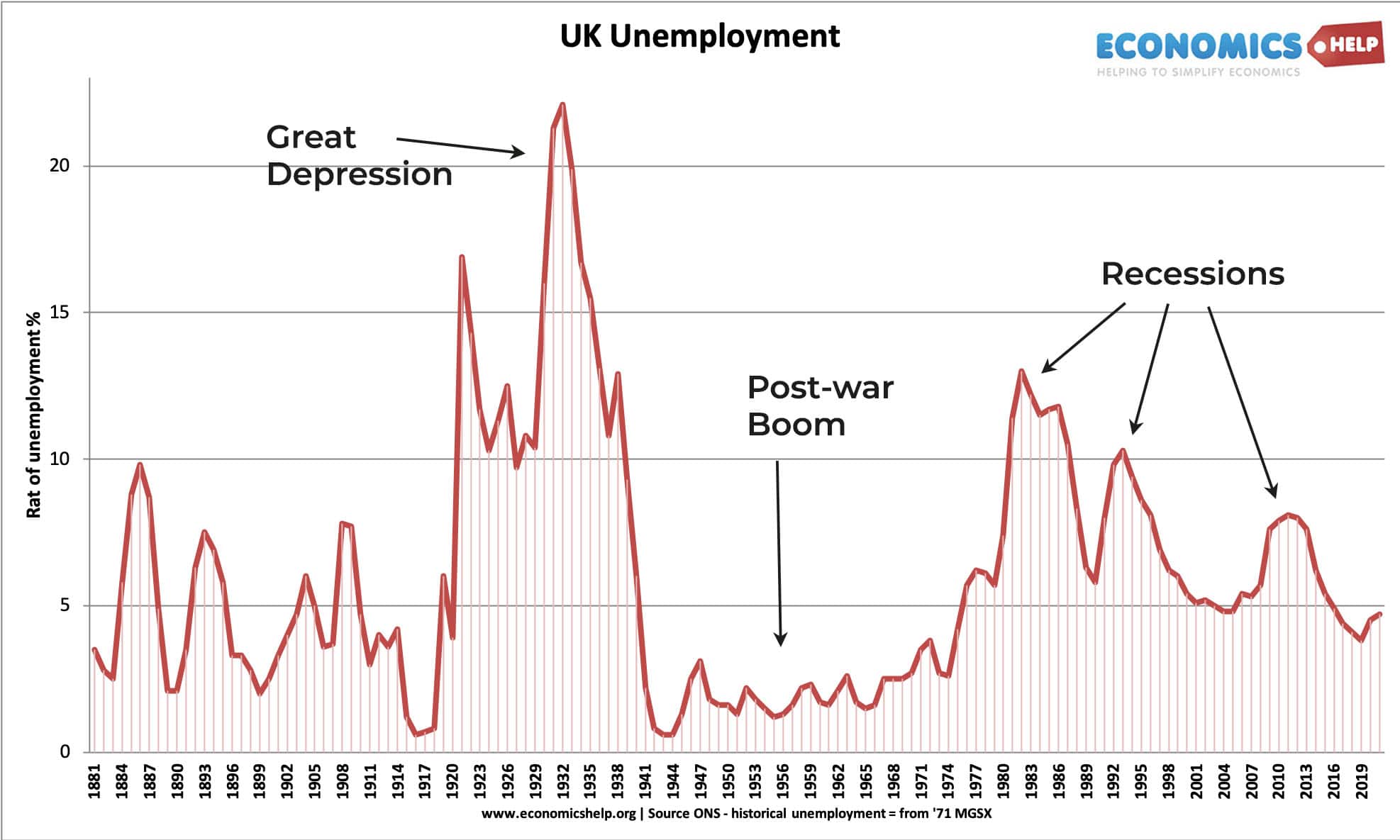Causes of unemployment
A look at the main causes of unemployment – including demand deficient, structural, frictional and real wage unemployment.

Main causes of unemployment
1. Frictional unemployment
This is unemployment caused by the time people take to move between jobs, e.g. graduates or people changing jobs. There will always be some frictional unemployment in an economy because the information isn’t perfect and it takes time to find work.
2. Structural unemployment
This occurs due to a mismatch of skills in the labour market it can be caused by:
- Occupational immobilities. This refers to the difficulties in learning new skills applicable to a new industry, and technological change, e.g. an unemployed farmer may struggle to find work in high tech industries.
- Geographical immobilities. This refers to the difficulty in moving regions to get a job, e.g. there may be jobs in London, but it could be difficult to find suitable accommodation or schooling for their children.
- Technological change. If there is the development of labour-saving technology in some industries, then there will be a fall in demand for some types of labour which have been replaced by machines.
- Structural change in the economy. The decline of the coal mines due to a lack of competitiveness meant that many coal miners were unemployed. However, they found it difficult to get jobs in new industries such as computers.
- See: structural unemployment.
3. Classical or real-wage unemployment:

- This occurs when wages in a competitive labour market are pushed above the equilibrium, e.g. at W2 the supply of labour (Q3) is greater than the demand for labour (Q2) leading to unemployment.
- Wages could be pushed above the equilibrium level by minimum wages or trades unions. This is sometimes known as “disequilibrium” unemployment.
- Classical Unemployment
4. Voluntary unemployment
This occurs when people choose to remain unemployed rather than take jobs available. For example, if benefits are generous, people may prefer to stay on benefits rather than get work. Frictional unemployment is also a type of voluntary unemployment as they are choosing to wait until they find a better job.
5. Demand deficient or “Cyclical unemployment”


- Demand deficient unemployment occurs when the economy is below full capacity.For example, in a recession aggregate demand (AD) will fall leading to a decline in output and negative economic growth.
- With a fall in output, firms will employ fewer workers because they are producing fewer goods. Also, some firms will go out of business leading to large scale redundancies.
- In recessions, unemployment tends to rise rapidly as firms lay off workers.
This shows the biggest cause of unemployment in the UK has been cyclical factors. During the 1920s, the UK economy experienced deflation and low growth. This was exacerbated by the great depression of the 1930s.
In the post-war period of economic growth, unemployment was low – until the early 1980s recession. The 1980s also saw a rise in the natural rate of unemployment due to supply side (structural factors)
The graph of unemployment also shows the recessions of 1991/92 and 2008/09
- More on demand deficient unemployment





